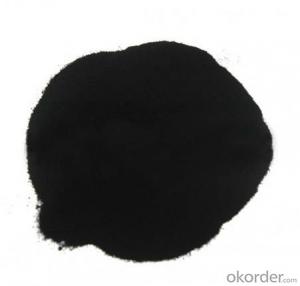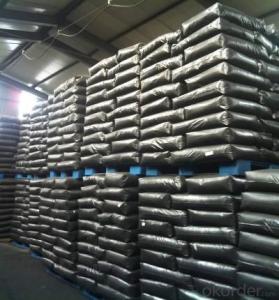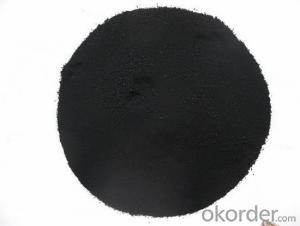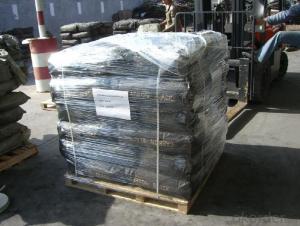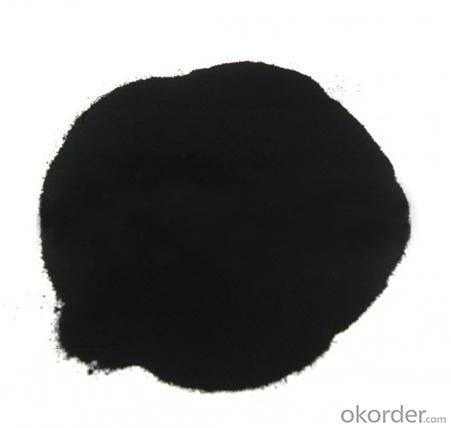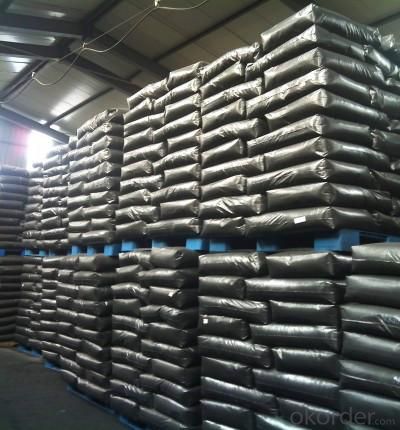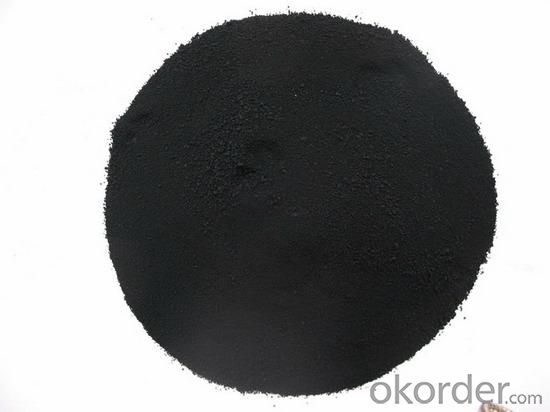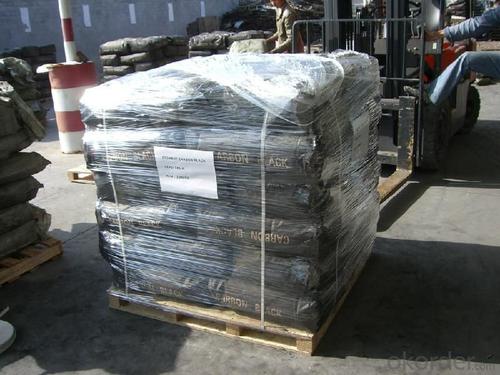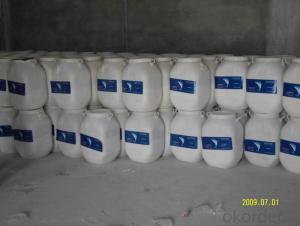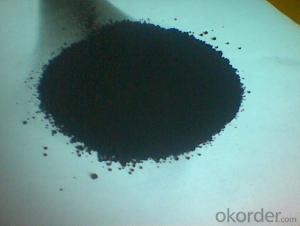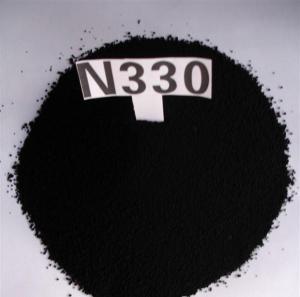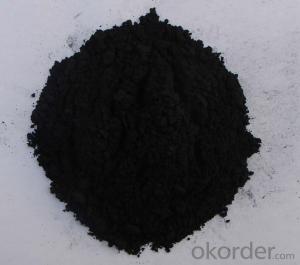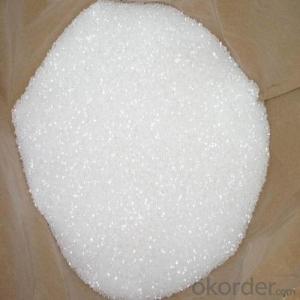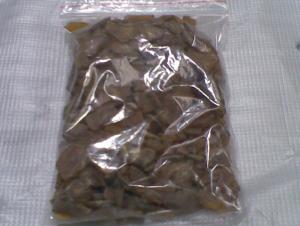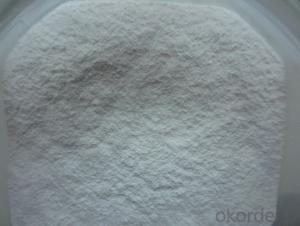market price for carbon black
- Loading Port:
- Qingdao
- Payment Terms:
- TT OR LC
- Min Order Qty:
- -
- Supply Capability:
- 20000 m.t./month
OKorder Service Pledge
OKorder Financial Service
You Might Also Like
Specifications
market price for carbon black
1.black powder/granules
2.used in rubber industry
3.good quality in the international
market price for carbon black
carbon black tyre pyrolysis N220,N330,N550,N660
1) The best black pigment
2)Almost is the cheapest pigment
3)Tinting strength and covering the strongest pigment
4)Tire tread, high quality industrial rubber products
1.Characteristic: Good abrasion resistance and crack resistance. Its stress at definite elongation is lower.
2. Application: Enhanced carbon black; Tire tread, high quality industrial rubber products and high load conveyor belt
| N220 | N330 | N550 | N660 |
Iodine-absorption Number, g/Kg | 121±5 | 82±7 | 43 ± 6 | 36 ± 6 |
DBP Absorption (10-5 m3/kg ) | 114±5 | 102±7 | 121 ± 7 | 90 ± 7 |
Compression DBP absorption (10-5 m2/kg) | 90~105 | 78~98 | 77~93 | 66~82 |
Nitrogen Surface area Absorptive(103m2/Kg) | 109-129 | 73-93 | 34-50 | 27-43 |
Surface of CTAB absorption rate (102 m2 / kg ) | 102~121 | 73~91 | 35~49 | 29~43 |
Ash Content% | 0.5 | 0.5 | 0.5 | 0.5 |
45μm Sieve Residue,%≤ | 0.10 | 0.10 | 0.10 | 0.10 |
150μm Sieve Residue,%≤ | 0.02 | 0.02 | 0.02 | 0.02 |
Surface of He absorption rate ( 102 m2 / kg ) | 112~126 | 71~85 | 34~46 | 29~41 |
Tint Stregth( %) | 105~125 | 95 ~ 111 | - | - |
Appearance | Black Powder or Granular | |||
Packing | 25kg net bag, 16MT in 20’FCL | |||
Usage | Its mainly used in rubber industry, and in printing ink, paint, plastic industry, car tire tread | |||
Packing:25kg knitting bags top grade linerfilm,good properties of waterproof and avoid water,solarization.
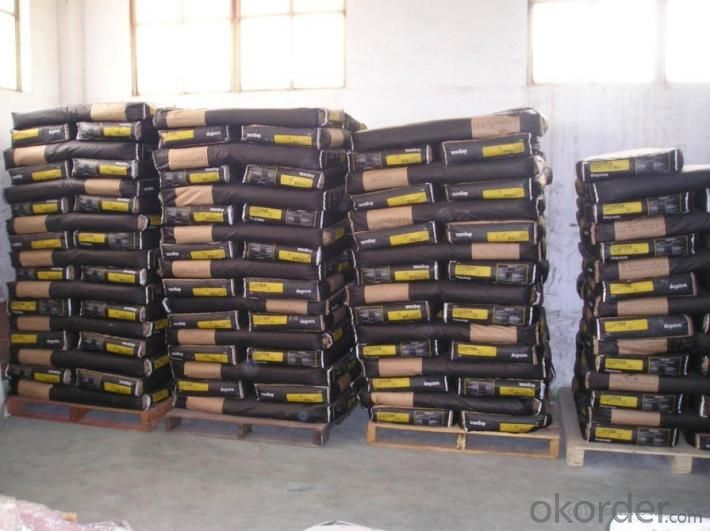
- Q: Why the catalyst after the chemical reaction of its quality and chemical properties unchanged
- In fact, the catalyst reaction also enters, which changes the rate of positive and negative reactions ... enhances the reactive molecules of the reactants, thereby changing the reaction rate ...
- Q: What is a catalyst and how does it make a reaction go faster?
- Catalysts change the rate of the reaction (faster / slower) without being consumed (used up) in the reaction. They do this by providing a lower energy (easier) pathway from reactants to products. For example in the reaction A + B -D, we can split up the reaction into the two half-reactions below. The first describes the two reactants coming together and the second describes the product formation. A + B -AB AB -D If we add a catalyst which both A and B bond to easier than they do to each other this can increase the rate of the reaction by bringing A and B together on the catalyst. This can be represented with the half-equations below. A + B + Cat -ABCat ABCat -D + Cat
- Q: The "one-to-two change" of the catalyst is that the quality and chemical properties of the reactants are constant or the quality and chemical properties of the catalyst are constant?
- The quality and chemical properties of the catalyst are unchanged
- Q: What happens to a catalyst after a chemical reaction?
- Only a catalyst? Poor catalyst. Catalysts get very little respect. Folks assume that catalysts don' do anything, yet they magically speed up a reaction without taking part in the reaction. That just isn't the case. Most chemical reactions take place in multiple steps. A catalyst can be a reactant in one step and a product in s subsequent step, thereby giving the impression that it did not react. The catalyst speeds up a chemical reaction by providing an alternate reaction pathway which has a lower activation energy. The lower activation energy means that more molecules will have the energy required to react, and the rate will be greater. So the bottom line is that the catalyst will have appeared not to have reacted, and returns to its original state.
- Q: a) A catalyst such as chlorophyll must be present for some reactions to take place.b) A catalyst such as chlorophyll is not one of the products of a chemical reaction.c) A catalyst such as chlorophyll is not a substance that is used or changed in a chemical reaction.
- (c) fairly catalyst varies the path of reaction or u can say mechanism of reaction in which activation ability receives decrease hence of which fruitful collisions occurred at extremely decrease temperature so greater beneficial opportunities for molecules to bypass activation complicated a catalyst is a substance that lowers the activation ability of a chemical reaction yet itself final unchanged in the process the time of the reaction
- Q: Could God be Discribed as a Catalyst?
- I'm an atheist but one of my friends explained that thinking to me. Here's what he said. Do objects exist? When objects are created something creates them, right? Objects can't be created from themselves. (Chicken and Egg theory) There needs to be a catalyst for things to be created. I just choose to label this catalyst by the name of God. Technically my friend went into a lot more detail but I don't really remember his exact words. Hope this helps.
- Q: Chemical catalyst in several ways
- Two, can speed up and slow down
- Q: What is the definition and function of the catalyst in chemistry?
- Definition: in the chemical reaction can change the chemical reaction rate of other substances, and its own quality and chemical properties before and after the reaction did not change the material called catalyst, also known as catalyst. The role of the catalyst in the chemical reaction is called catalysis. The use of a catalyst only changes the rate of chemical reaction and does not alter the quality of the product.
- Q: What is the quality of the catalyst in the chemical reaction, for example, 34.3 g before the hydrogen peroxide reaction, 32.7 g after the reaction, and how much is the catalyst mass?
- You can not calculate this question, the quality of the catalyst before and after the same reaction, how much reaction before the reaction on how much
- Q: What is the analytical principle of chemical adsorbents? How about the number of active catalyst centers tested?
- What do you mean by the chemical adsorber? BET is the use of the surface of the uneven force field, but the inert gas at low temperature in the surface adsorption. TPD, TPR is the number of active centers that can be measured by the technique of desorption and reduction between specific gases and catalysts as the temperature increases. If the active site is a reduced position, H2-TPR can be used. If the active site is acidic, NH3-TPD can be used, but also the method of alkali titration.
Send your message to us
market price for carbon black
- Loading Port:
- Qingdao
- Payment Terms:
- TT OR LC
- Min Order Qty:
- -
- Supply Capability:
- 20000 m.t./month
OKorder Service Pledge
OKorder Financial Service
Similar products
Hot products
Hot Searches
Related keywords
